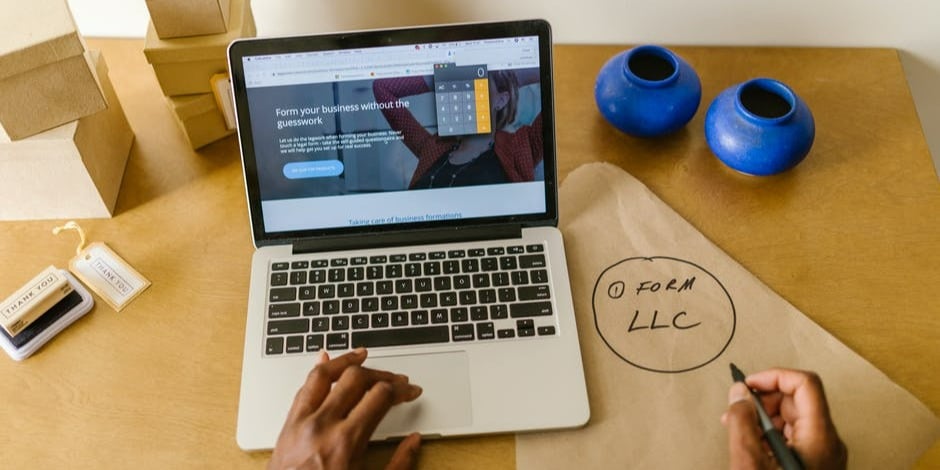The Ultimate Guide to High-Performance B2B Websites
It's no secret that the pandemic has played a huge factor in an increase in online sales! Learn to ride this wave and create a B2B website that...


Think of the last time you were searching for answers to a problem you had. Chances are, you saw some signs—be it an obnoxious pop-up, some tiny, pixelated images, or a warning from your browser saying the site wasn’t secure. Chances are, you left the site as fast as you could.
There’s no faster way to send customers running for the hills than if they don’t trust your website, so it’s important to establish that baseline rapport with them before you even think about closing sales or getting them to submit their email address on a form.
Here are seven methods we use to establish trust with our website visitors when they’re searching for inbound marketing solutions.
WILL INSERT B2B Website Pillar page AS A CTA ONCE BLOG IS POSTED
Trust starts from the bare bones of your website. Fact aside that some browsers will outright prevent their users from going to a website with an expired security certificate, visitors to your website are warier than ever of their cybersecurity. Not having those security measures in place is the easiest way to send them running for the hills—and to your competitors.
The easiest way to put your website visitors at ease is to make sure your site is HyperText Transfer Protocol Secure, better known as having “HTTPS” at the beginning of your website’s URL. Like a tiny little green light at the top of your website, the padlock that appears to the left of the URL tells your website visitors that your site is safe to visit so they can find the information they’re looking for.
For your website visitors, your goal should be to educate rather than sell.
Imagine you’re walking through a library, searching for information on how to fix a leaky faucet. You wander into the nonfiction section and start looking through the technology section since that’s where most books on plumbing are kept. But, just as you’re about to grab the first book that looks relevant to you, a man dressed in a button-up and tie jumps out from behind the shelves and tells you he’s a plumber that can come to your house and fix your faucet if you just sign a contract and tell him your address.
Pretty annoying, right? Kind of suspicious, maybe?
That’s what it feels like when you start immediately using your website to sell, rather than starting out by educating your visitor. Provide the information they’re looking for, and offer solutions to their problem, but be relevant and unbiased while doing so.
Revisiting our leaky faucet analogy, if someone is searching online for how to do their own plumbing, your best bet for getting in front of them is to offer them steps to fixing the leak themselves. Then, when they reach the end of the steps and realize they might be out of their depth, you can offer them your services as a solution, along with a form where they can submit their contact information to get in touch with them.
Although there’s a balance to be had with image size so your website is optimized as much as possible, it also pays to make sure your images are properly sized and high-quality. Generic stock images also raise red flags for some people, since it leaves the implicit impression that you don’t have any photos of your actual product or service.
There’s also something to be said about not having images at all. While it would drastically increase your loading speed, leaving images off of any part of your website further sends a subtle message that you don’t have anything to show them—including a justifiable reason to give you their information.
If you can, provide high-quality photos of what you can offer them and place them strategically on your site. These provide a window into your services, who you serve, and more vital information about your business.
This might seem like a small thing—it is, after all, the fine print under your subscription and download forms. However, assuring your user that they can unsubscribe at any time, thus showing that they won’t be losing their agency as a consumer by signing up, makes a difference.
It also pays to have a top-level agreement of what you’ll do with their information available right below where they’re about to give you their email address. If you’re not planning on sharing their information, tell them that. While you’re at it, let them know how often you’ll email them. It goes without saying, but getting bombarded three times a day with promotions and updates when you were expecting a weekly subscriber email with the latest updates on your industry can leave a bad taste in your mouth.
When it comes to fostering trust, case studies and testimonials are worth their weight in gold. They show the benefits of your offerings and how you’ve helped your clients and customers solve the issues that your visitors are also likely looking to solve. This goes back to creating a helpful resource for the visitor, with an additional layer of solutions to your visitor’s pain points.
Leave these invaluable assets ungated and in an accessible part of your website. For example, include a link to a listing page with all of your case studies or testimonials right at the top of your navigation bar. This will make it even easier for visitors to see what your services are like, often in the words of customers.
Oftentimes, a business’s About page is a repository for leadership to navel-gaze about the company’s promotional offerings and what makes them the best in the business. However, there are opportunities to make the About page a bird’s eye view of how your organization works, your stakeholders, the process of working with your business, and so much more.
The trick with using the About page effectively is to be concise and informative, while still taking a somewhat neutral tone.
More and more companies are starting to do this, and with good reason. Showing your website visitors who works for your organization can make a huge difference in humanizing your team and subtly establishing that you’re willing to engage with them as a group of people, rather than a business and a prospect.
To get the most out of this tip, we recommend not only having profiles of your leadership team but all of your employees. LeadG2 does this, and we’re glad we do because it helps our prospects see who we are and who they’ll be working with before they ever reach out to us.
Ultimately, the best ways to win the trust of your website visitors come down to providing them with an experience that’s human and holistic. Treat your visitors the way you would like to be treated when you’re searching for solutions, and you’ll be rewarded with their trust.

It's no secret that the pandemic has played a huge factor in an increase in online sales! Learn to ride this wave and create a B2B website that...

Your website is more than just a collection of pages—it's an interconnected ecosystem. At the heart of this ecosystem lies a powerful tool that can...

First impressions are everything, especially online. But is your website making the right one for your brand? The importance of making a good first...